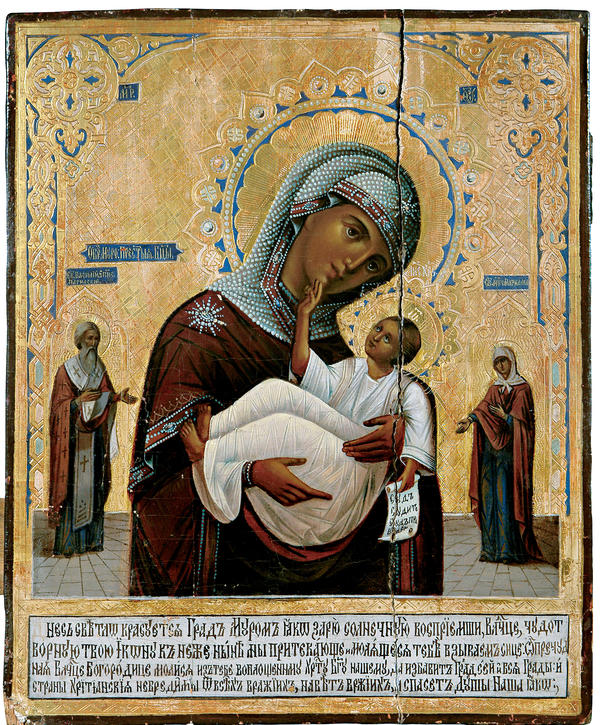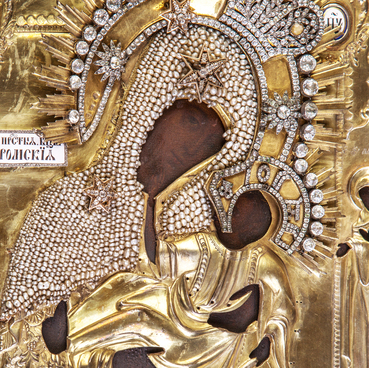The icon depicts Our Lady of Murom. An unknown icon painter created this image in the late 19th – early 20th century. As legend has it, the image of Our Lady of Murom was brought from Kiev by Holy Prince Konstantin Svyatoslavovich who ruled Murom from 1097 to 1129. As a result, the citizens of Murom adopted Christianity. This icon repeats the image of the Mother of God, which was in Assumption Cathedral of Ryazan over the tomb of Bishop Basil.
In The Tale of the Establishment of Christianity in Murom – created in the 16th century – an unknown author described the appearance of this image and various miracles that took place next to it in detail. The first miracle of the icon was when the pagan Murom took the righteous path and adopted Orthodoxy. Our Lady of Murom emanated radiance as bright as that of the sun and the pagans accepted Christianity by faith and decided to be baptized.
Parishioners called it the prayer of St. Basil. The icon was first mentioned in 1638. It resembled the ancient Greek images. On the margins, the iconographer placed images of St. Basil the Confessor of Parium and St. Mariamne the sister of the Apostle Philip. Parishioners called it the prayer of St. Basil. The icon was first mentioned in 1638. It resembled the ancient Greek images. On the margins, the iconographer placed images of St. Basil the Confessor of Parium and St. Mariamne the sister of the Apostle Philip.
The Tale of St. Basil of Ryazan tells that afterwards St. Bishop Basil took the icon to Ryazan. The Saint traveled on a mantle along the waters of the Oka River against its course. In his hands he held the image of Our Lady of Murom. This journey is considered the second miracle revealed by the icon.
On the lower margin of the icon there is a text of the troparion to Our Lady of Murom:



